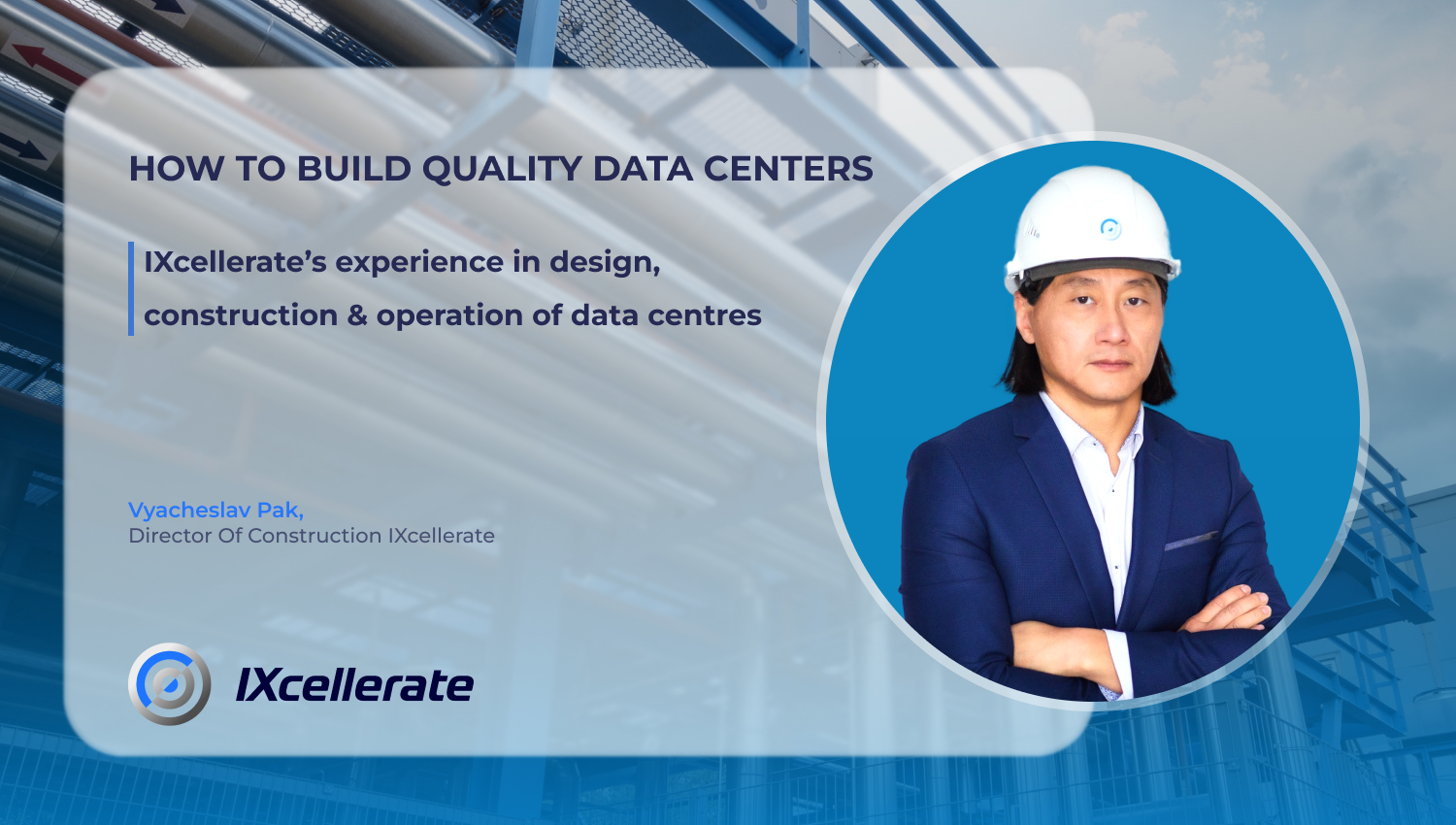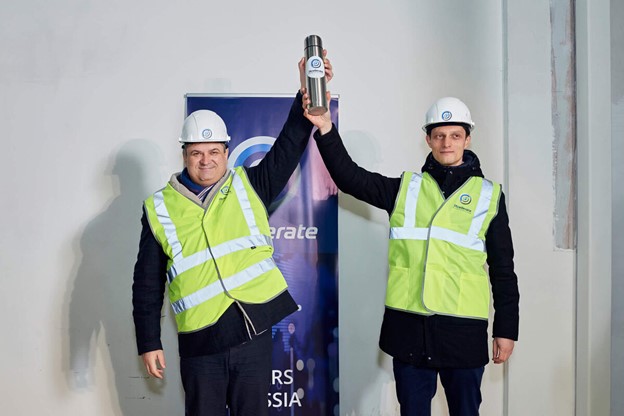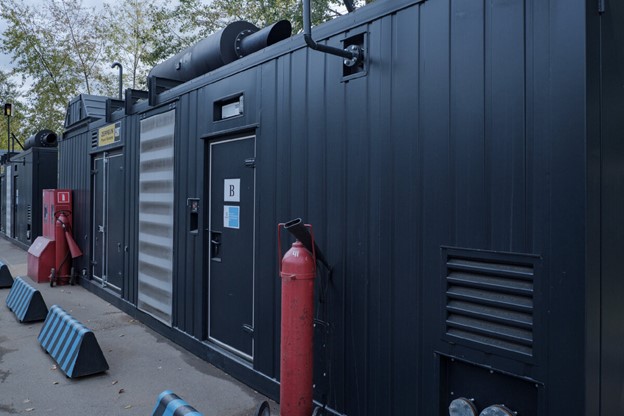
Although we live in the age of high tech, it is impossible to just download a “how-to build a data center“ manual from the web and use it to construct a facility. Your project’s success depends on a multiple factors: from market survey and strategic planning of your service delivery model to selecting a suitable location and conceptualizing your utility infrastructure.
After all, our aim is to launch a cutting-edge and reliable facility with scalable engineering infrastructure, to be used without accidents and failures for years to come.
We talked to Vyacheslav Pak, Construction Director at IXcellerate, about how to build state-of-the-art data centres with outstanding fault tolerance and reliability.
Construction stages
DC construction projects require vision and strategic decisions, like in any commercial construction project. To crystalize a successful business model your future data center should have the positioning strategy on the market; target customers should be identified and well profiled; a set of technological solutions, along with financial model and potential investors should be approved and fit into certain time frame.
Note that any construction project, including data centres, can be broken down into several key stages:
- the development of conceptual process engineering and pre-design solutions based on the findings of surveys and scoping;
- the development of design specifications (stages called “Design” and “DD [detailed documentation]”):
– new-builds or refurbishment projects necessitate the development/collection /approval of basic enabling documentation from local governments and public oversight authorities, specialist government agencies, utility providers and land owners;
- survey of the equipment and materials market as well as of the construction industry (suppliers, designers, contractors, technical authorities, construction supervision, on-site designer supervision, to name but a few), tendering processes followed by contracting.
- thorough planning of project resources from the development and finalization of detailed supply and work schedules to financing forecasting over time;
- good liaison between all the construction project participants in order to synchronize design solutions, equipment deliveries and building and installation works;
- the performance of monitoring and overseeing functions to ensure the implementation of the approved design solutions, the procedures and quality of building and installation works, the meeting of deadlines and budget targets, as well as compliance with safe work practices;

- the completion of pre-commissioning activities, component and integration testing of the buildingwide systems and the utility infrastructure of the DC;
- the development of as-built and operational documentation (including passports [data sheets] and certificates, as-built drawings, etc.);
- the delivery of the completed construction project and the commissioning of the DC.
IXcellerate also has one more requirement, which has become an important part of the Company’s corporate culture, i.e. the landing of the time capsule into DC foundation with a message for future generations.
Engineering systems for DC fault tolerance
Fault tolerance is one of the key indicators of a data centre’s reliability and safety. The DC construction projects must only use cutting-edge tech and tried and tested engineering solutions.
The main categories of the DC engineering systems include:
- power supply: the system ensures smooth and uninterrupted power supply to all of the DC’s equipment and prevents losses in the event of power outages; it incorporates UPS, mains and reserve supply;
- cooling: the system enables the safe operation of equipment under high traffic and protects it against overheating; it incorporates active cooling circuits, as well as passive solutions, and integrates heating, ventilation, air conditioning and water supply systems;
- safety and security: a package of measures and solutions used to protect the DC against internal and external threats; it comprises physical security and access control systems, CCTV, alarm and security systems, fire safety and virtual protection of resources;
- connectivity: communications solutions and networks that enable access and data transmission; the site is designed to have cable entries and to house communications hubs; flows are being configured and routed; trays and SCS [structured cabling system] are being installed, etc.
- monitoring and control: the system’s purpose is to prevent possible problems and to maximize the availability, accessibility, affordability and reliability of the DC.

All IXcellerate data centres comply with the Tier III availability requirements as classified by the Uptime Institute. This means that the core systems (power supply, cooling, connectivity, etc.) have redundant capacity, and the DC doesn’t need to go offline for technical maintenance.
For example, the energy security principle is implemented at the IXcellerate data centres through connection to two independent power supply sources from the municipal grid and a DGU [diesel generator unit] used as a backup power supply.
We have recently examined in detail the matter of physical and virtual security (see the article on our website), so it can be omitted here.
DC commissioning
Before a data centre is brought online, the following checks and tests must be carried out:
- individual tests of each unit of equipment and of the entire system as a whole;
- integration tests of the fire safety systems;
- integrated systems testing under the full load for cooling and power supply (IST);
- staff training in operating the building’s equipment and systems, as well as in emergency response activities.
IXcellerate's “secret” success formula
A DC construction project is a costly and very labour-intensive undertaking, so it is vital to do everything right and plan for long-term growth.
Instead of recapping, we prefer to share some of our best practices that we have developed at our company over 10-plus years of designing, building and operating DCs. They are what largely helps IXcellerate to optimize its investment outlays and to improve the energy efficiency of the DCs.
- BIM solutions used in design. These minimize the risks of conflicts between utility systems, provide better estimates of loads on the building’s structures and enable air flow simulation, to name but a few.
- In its design solutions for cooling new data halls, IXcellerate dropped standard air-cooling solutions (ACs) in favour of the concept of an air-cooling chamber.
- And the Heat Pump integrated HVAC solutionhelped IXcellerate to save some 200 Gcal per year on heating costs at the North Campus over two heating seasons.
We hope that this article will be of use to you in building your own business strategy and will show you some lifehacks.